California’s New PFAS laws apply to mattresses. Are you ready?
California’s New PFAS laws apply to mattresses. Are you ready?
Across the country, several states have enacted laws limiting the use of PFAS in consumer products. California has passed 2 laws targeting specific product categories (including mattresses) and added specific PFAS chemicals to its Prop 65 list of substances that require warning labels. Each law is different in important respects. Make sure you know the rules.
Juvenile Mattresses Covered by CA AB 652
Effective July 1, 2023, CA AB 652 banned the distribution and sale in California of any new juvenile product that contains regulated PFAS. The law defines PFAS broadly to include any chemical containing one fully fluorinated carbon atom. This ban applies to “intentionally added PFAS” or PFAS above 100 ppm in a juvenile product or component of that product, as measured in terms of total organic fluorine. “Juvenile product” is defined to include a “crib mattress, polyurethane foam mat, pad, or pillow, portable foam nap mat, and toddler mattress.” The definition of juvenile products in this bill specifically excludes adult mattresses (which would include twin size mattresses).
Furnishings, Upholstery, and Bedding Covered by CA AB 1817
Effective January 1, 2025, CA AB 1817 bans the manufacture, distribution or sale of any new textile article that contains regulated PFAS. Like AB 652, this law defines PFAS broadly to include any chemical containing one fully fluorinated carbon atom. Although the law regulates only new textile articles, it bans “intentionally added PFAS” in new textile articles, as well as PFAS in excess of 100 ppm (measured in terms of total organic fluorine) in the finished product or components of the product. In addition, effective January 1, 2027, the PFAS content threshold falls to 50 ppm (measured in terms of total organic fluorine.)
The law defines “textile articles” as “textile goods of a type customarily and ordinarily used in households and businesses” including “furnishings, upholstery, and bedding.” Although the word “mattress” is not explicitly used in AB 1817, the “textile articles” definition is broad enough to apply to mattresses. Unlike AB 652, the textile articles definition is not limited to juvenile products, but applies to all relevant products.
3 PFAS Chemicals in Mattresses Covered by Prop 65
Proposition 65 requires that companies provide a “clear and reasonable warning” prior to exposing a person to a chemical in a consumer product “known to the state to cause cancer or reproductive toxicity.” The law does not ban or otherwise regulate the sale of products in California. Prop 65 may be enforced by the California Attorney General, any district attorney or city attorney or by an individual acting in the public interest that files a lawsuit against a company alleged to be in violation. Companies that sell products that lack proper warning labels are subject to financial penalties and private enforcers may receive 25% of the penalty plus attorney’s fees.
Prop 65 warning requirements currently apply to 3 PFAS chemicals: perfluorooctane sulfonic acid (PFOS), perfluorooctanoic acid (PFOA) and perfluorononanoic acid (PFNA) used in any products, including mattresses. Since these chemicals were added to the Proposition 65 chemical list, citizen enforcers have reported more than 100 violations directed at companies selling consumer products into California that have failed to comply with Proposition 65 labeling requirements.
In addition to the listed PFAS chemicals, California has considered listing perfluorodecanoic acid (PFDA), perfluorohexanesulfonic acid (PFHxS) and perfluoroundecanoic acid (PFUnDA) under Prop 65. Although California has not added these other PFAS chemicals to the Prop 65 list, their consideration for inclusion demonstrates that the state will continue to scrutinize PFAS chemistries in the coming years.
For additional analysis, please view this chart that analyzes the enacted laws and regulations above, available for ISPA members only.
* * *
In addition to these three existing laws, California is considering legislation to further restrict the use of PFAS. For example, CA SB 903 would ban the use of intentionally added PFAS across all consumer products effective January 1, 2030. However, California is in the midst of a serious fiscal crisis. Just as California Governor Newsom last year vetoed bills that the legislature passed restricting PFAS in other categories of consumer products and universal reporting requirements for products containing PFAS in part because of their cost implications, SB 903 faces an uncertain future for this reason.


